#Black Voters Matter
Text
Caveat Lector 🚨🚨🚨

Donald Trump supporters have been creating and sharing AI-generated fake images of black voters to encourage African Americans to vote Republican.
BBC Panorama discovered dozens of deepfakes portraying black people as supporting the former president.
Mr. Trump has openly courted black voters, who were key to Joe Biden's election win in 2020.
But there's no evidence directly linking these images to Mr. Trump's campaign.
The co-founder of Black Voters Matter, a group which encourages black people to vote, said the manipulated images were pushing a “strategic narrative” designed to show Mr. Trump as popular in the black community.
A creator of one of the images told the BBC: “I'm not claiming it's accurate.”
The fake images of black Trump supporters, generated by artificial intelligence (AI), are one of the emerging disinformation trends ahead of the US presidential election in November.
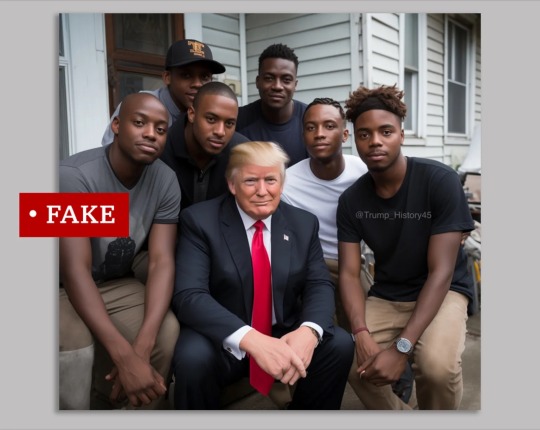
Unlike in 2016, when there was evidence of foreign influence campaigns, the AI-generated images found by the BBC appear to have been made and shared by US voters themselves.
One of them was Mark Kaye and his team at a conservative radio show in Florida.
They created an image of Mr. Trump smiling with his arms around a group of black women at a party and shared it on Facebook, where Mr. Kaye has more than one million followers.
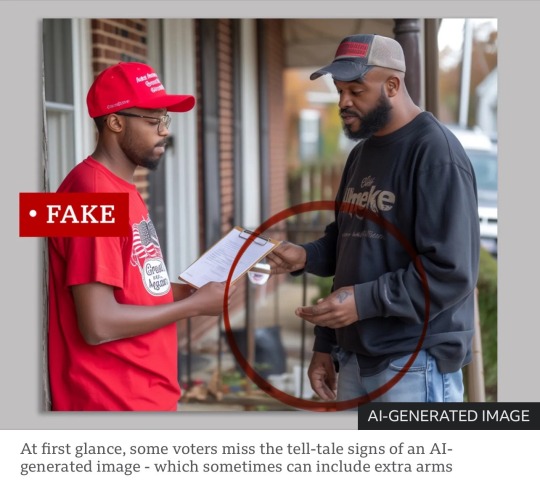
At first it looks real, but on closer inspection everyone's skin is a little too shiny and there are missing fingers on people's hands - some tell-tale signs of AI-created images.
“I'm not a photojournalist,” Mr. Kaye tells me from his radio studio. “I'm not out there taking pictures of what's really happening. I'm a storyteller.”

Disinformation tactics in the US presidential elections have evolved since 2016, when Donald Trump won. Back then, there were documented attempts by hostile foreign powers, such as Russia, to use networks of inauthentic accounts to try to sow division and plant particular ideas.
In 2020, the focus was on home-grown disinformation - particularly false narratives that the presidential election was stolen, which were shared widely by US-based social media users and endorsed by Mr. Trump and other Republican politicians.
In 2024, experts warn of a dangerous combination of the two.
(continue reading)
#politics#republicans#donald trump#deepfakes#disinformation#republican dirty tricks#misinformation#ai#a.i.#artificial intelligence#media manipulation#false narratives#black republicans#caveat lector#black voters matter#mark kaye#fake ai
143 notes
·
View notes
Text
Trump supporters are trying to blur Trump's racism by posting fake AI images of him being the object of adoration by African Americans.
One of the disseminators of such images is a white MAGA talk show host in Florida.
Unlike in 2016, when there was evidence of foreign influence campaigns, the AI-generated images found by the BBC appear to have been made and shared by US voters themselves.
One of them was Mark Kaye and his team at a conservative radio show in Florida.
They created an image of Mr Trump smiling with his arms around a group of black women at a party and shared it on Facebook, where Mr Kaye has more than one million followers.
At first it looks real, but on closer inspection everyone's skin is a little too shiny and there are missing fingers on people's hands - some tell-tale signs of AI-created images.
"I'm not a photojournalist," Mr Kaye tells me from his radio studio.
"I'm not out there taking pictures of what's really happening. I'm a storyteller."
He had posted an article about black voters supporting Mr Trump and attached this image to it, giving the impression that these people all support the former president's run for the White House.
In the comments on Facebook, several users appeared to believe the AI image was real.
"I'm not claiming it is accurate. I'm not saying, 'Hey, look, Donald Trump was at this party with all of these African American voters. Look how much they love him!'" he said.
"If anybody's voting one way or another because of one photo they see on a Facebook page, that's a problem with that person, not with the post itself."
Basically, Mark Kaye is telling the BBC that he has the right to deceive people.
Another spreader of fake images is a Christian fundamentalist known as "Shaggy" in Michigan.
We tracked down the person behind the account called Shaggy, who is a committed Trump supporter living in Michigan.
"[My posts] have attracted thousands of wonderful kind-hearted Christian followers," he said in messages sent to the BBC on social media.
When I tried to question him on the AI-generated image he blocked me. His post has had over 1.3 million views, according to the social media site X. Some users called it out, but others seemed to have believed the image was real.
FYI: This is "Shaggy". Is anybody shocked that the people spreading these fake images of blacks are old white MAGA zombies?

Apparently there are still people using oligarch Elon Musk's Twitter X. Don't expect Odious Elon to do anything about obvious attempts to deceive users.
Cliff Albright, the co-founder of campaign group Black Voters Matter, said there appeared to be a resurgence of disinformation tactics targeting the black community, as in the 2020 election.
"There have been documented attempts to target disinformation to black communities again, especially younger black voters," he said.
If Trump supporters think that they have the right to spread bogus images, we then have the right to have some fun with them. 😋

#african americans#donald trump#fake images#disinformation#fake news#poor ai distortions#mark kaye#MAGAShaggy1958#maga zombies#social media#deceiving black voters#republicans#cliff albright#black voters matter#election 2024#vote blue no matter who
12 notes
·
View notes
Text
Florida Gov. Ron DeSantis was incensed. Late last year, the state’s Republican legislature had drawn congressional maps that largely kept districts intact, leaving the GOP with only a modest electoral advantage.
DeSantis threw out the legislature’s work and redrew Florida’s congressional districts, making them far more favorable to Republicans. The plan was so aggressive that the Republican-controlled legislature balked and fought DeSantis for months. The governor overruled lawmakers and pushed his map through.
DeSantis' office has publicly stressed that partisan considerations played no role and that partisan operatives were not involved in the new map.
A ProPublica examination of how that map was drawn — and who helped decide its new boundaries — reveals a much different origin story. The new details show that the governor’s office appears to have misled the public and the state legislature and may also have violated Florida law.
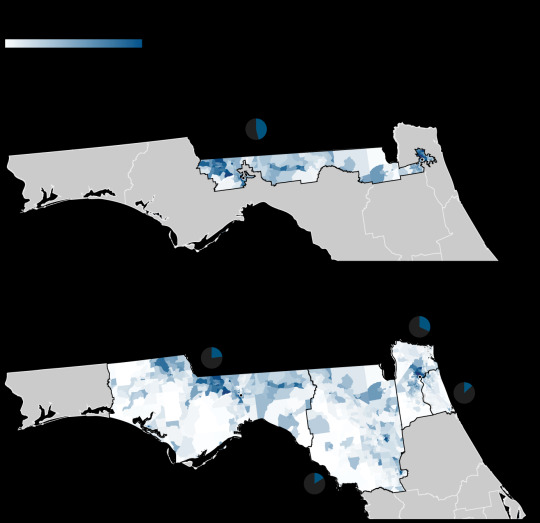
DeSantis aides worked behind the scenes with an attorney who serves as the national GOP’s top redistricting lawyer and other consultants tied to the national party apparatus, according to records and interviews.
Florida’s constitution was amended in 2010 to prohibit partisan-driven redistricting, a landmark effort in the growing movement to end gerrymandering as an inescapable feature of American politics.
Barbara Pariente, a former chief justice of the state Supreme Court who retired in 2019, told ProPublica that DeSantis’ collaboration with people connected to the national GOP would constitute “significant evidence of a violation of the constitutional amendment.”
“If that evidence was offered in a trial, the fact that DeSantis was getting input from someone working with the Republican Party and who’s also working in other states — that would be very powerful,” said Pariente, who was appointed to the Supreme Court by Democrat Lawton Chiles.
A meeting invite obtained by ProPublica shows that on Jan. 5, top DeSantis aides had a “Florida Redistricting Kick-off Call” with out-of-state operatives. Those outsiders had also been working with states across the country to help the Republican Party create a favorable election map. In the days after the call, the key GOP law firm working for DeSantis logged dozens of hours on the effort, invoices show. The firm has since billed the state more than $450,000 for its work on redistricting.
A week and a half after the call, DeSantis unveiled his new map. No Florida governor had ever pushed their own district lines before. His plan wiped away half of the state’s Black-dominated congressional districts, dramatically curtailing Black voting power in America’s largest swing state.
One of the districts, held by Democrat Al Lawson, had been created by the Florida Supreme Court just seven years before. Stretching along a swath of north Florida once dominated by tobacco and cotton plantations, it had drawn together Black communities largely populated by the descendants of sharecroppers and slaves. DeSantis shattered it, breaking the district into four pieces. He then tucked each fragment away in a majority-white, heavily Republican district.
DeSantis Broke Up Black-Dominated District and Put Its Pieces Into 4 Majority-White Districts Credit: Source: Redistricting Data Hub, IPUMS NHGIS
DeSantis’ strong-arming of his Republican allies was covered extensively by the Florida press. But until now, little has emerged about how the governor crafted his bold move and who his office worked with. To reconstruct DeSantis’ groundbreaking undertaking, ProPublica interviewed dozens of consultants, legislators and political operatives and reviewed thousands of pages of documents obtained through public records requests and from the nonpartisan watchdog group American Oversight.
DeSantis’ office did not respond to detailed questions for this story.
“Florida’s Governor fought for a legal map — unlike the gerrymandered plan the Governor rightly vetoed,” Adam Kincaid, executive director of the National Republican Redistricting Trust, whose top lawyer was hired by DeSantis’ office, said in an email to ProPublica. “If Governor DeSantis retained some of the best redistricting lawyers and experts in the country to advise him then that speaks to the good judgment of the Governor, not some alleged partisan motive.”
In four years as governor, DeSantis has championed an array of controversial policies and repeatedly used his power to punish his political opponents. A presumptive candidate for the Republican presidential nomination in 2024, he has often made moves that seemed tailored to attract headlines, such as his recent stunt sending migrants to Martha’s Vineyard. But it’s the governor’s less flashy commandeering of the redistricting process that may ultimately have the most long-lasting consequences.
Analysts predict that DeSantis’ map will give the GOP four more members of Congress from Florida, the largest gain by either party in any state. If the forecasts hold, Republicans will win 20 of Florida’s 28 seats in the upcoming midterms — meaning that Republicans would control more than 70% of the House delegation in a state where Trump won just over half of the vote.
The reverberations of DeSantis’ effort could go beyond Florida in another way. His erasure of Lawson’s seat broke long-held norms and invited racial discrimination lawsuits, experts said. Six political scientists and law professors who study voting rights told ProPublica it’s the first instance they’re aware of where a state so thoroughly dismantled a Black-dominated district. If the governor prevails against suits challenging his map, he will have forged a path for Republicans all over the country to take aim at Black-held districts.

Al Lawson’s district, now wiped away by DeSantis, had been created in response to an earlier episode of surreptitious gerrymandering in Florida.
Twelve years ago, Florida became one of the first states to outlaw partisan gerrymandering. Through a ballot initiative that passed with 63% of the vote, Florida citizens enshrined the so-called Fair Districts amendment in the state constitution. The amendment prohibited drawing maps with “the intent to favor or disfavor a political party.” It also created new protections for minority communities, in a state that’s 17% Black, forming a backstop as the U.S. Supreme Court chipped away at the federal Voting Rights Act.

Josiah Walls was elected to the U.S. House of Representatives from Florida in 1870
Thanks to distorted maps, Florida did not elect a second Black representative to Congress until 1992. That year, a federal court created three plurality-Black districts in Florida — and then three Black politicians won seats in the U.S. House.
After the Fair Districts amendment became law in 2010, state legislators promised to conduct what one called “the most transparent, open, and interactive redistricting process in America.” Policymakers went on tour across the state, hosting public hearings where their constituents could learn about the legislature’s decision-making and voice their concerns.
The hearings also served a more nefarious purpose, a judge would later rule. They were instrumental in what state circuit judge Terry Lewis described as “a conspiracy to influence and manipulate the Legislature into a violation of its constitutional duty.”
For months, a team of state-level Republican operatives worked in secret to craft maps that favored the GOP, coordinating with both statehouse leadership and the Republican National Committee. Then they recruited civilians to attend the hearings and submit the maps as their own.
An email detailed the advice the operatives gave their recruits. “Do NOT identify oneself orally or in writing,” it read, “as a part of the Republican party. It is more than OK to represent oneself as just a citizen.”
It took years of litigation for the details of the scheme to come to light. But in 2015, the Florida Supreme Court responded with force. In a series of rulings that ultimately rejected the Republicans’ efforts, the court laid out the stringent new requirements under Fair Districts, making clear that partisan “practices that have been acceptable in the past” were now illegal in the state of Florida.
After ruling that the legislature’s process was unconstitutional, the court threw out the Republicans’ congressional district lines and imposed a map of their own. That is how Lawson’s district came to be.

The amendment took on even greater significance in 2019, when the U.S. Supreme Court issued a landmark ruling on redistricting.
The court’s decision in Rucho v. Common Cause barred federal court challenges to partisan gerrymanders. Writing for the 5-4 majority, Chief Justice John Roberts said it was not an issue for the federal judiciary to decide, but emphasized the ruling did not “condemn complaints about districting to echo into a void.”
In fact, the issue was being actively addressed at the state level, Roberts wrote. He cited Florida’s amendment and one of Pariente’s opinions. Responding to liberal justices who wanted to reject Rucho’s map as an unconstitutional gerrymander, Roberts wrote they could not because “there is no ‘Fair Districts Amendment’ to the Federal Constitution.”
In 2021, state legislative leaders were more careful.
The senate instructed its members to “insulate themselves from partisan-funded organizations” and others who might harbor partisan motivations, reminding legislators that a court could see conversations with outsiders as evidence of unconstitutional intent. The legislature imposed stringent transparency requirements, like publishing emails that it received from constituents. And they ordered their staff to base their decisions exclusively on the criteria “adopted by the citizens of Florida.”
The Senate leadership “explained to us at the beginning of the session that because of what happened last cycle, everything had to go through the process,” Sen. Joe Gruters, who is also chairman of the Florida Republican Party, told ProPublica.
In November, the state senate proposed maps that largely stuck to the status quo. Analysts predicted they would give Republicans 16 seats in Congress and Democrats 12.

DeSantis wasn’t satisfied. “The governor’s office was very pissed off about the map. They thought it was weak,” said a well-connected Florida Republican, who spoke on the condition of anonymity so he could be candid. “They thought it was ridiculous to not even try to make it as advantageous as possible.”
In early January, DeSantis’ deputy chief of staff, Alex Kelly, was quietly assigned to oversee a small team that would devise an alternative proposal, according to Kelly’s later testimony.
State employees often spend years preparing for the redistricting process — time that DeSantis did not have. As Kelly and his colleagues set to work, they brought in critical help from the D.C. suburbs: Jason Torchinsky, a Republican election attorney and one of the leading GOP strategists for redistricting nationwide.
On Jan. 5, Kelly and two other top DeSantis aides had the redistricting “kick-off call,” according to the meeting invite, which was provided to ProPublica by American Oversight. The invitation included Torchinsky and another guest from out of state: Thomas Bryan, a redistricting specialist.
In an interview with ProPublica, Bryan explained the connection between the national Republican Party and his work with DeSantis. “There’s a core group of attorneys that works with the party and then they work with specific states,” he said. “It’s not a coincidence that I worked on Texas, Florida, Virginia, Kansas, Michigan, Alabama.”

A top partner at a conservative law firm, Torchinsky has represented the RNC, the Republican Party of Florida and many of America’s most influential right-wing groups, such as the Koch network’s Americans for Prosperity.
He also occupies a central role in the Republican Party’s efforts to swing Congress in its favor in 2022. Torchinsky is the general counsel and senior advisor to the National Republican Redistricting Trust, the entity the Republican National Committee helped set up to manage the party’s redistricting operations.
The NRRT boasts millions of dollars in funding and a roster of prominent advisors that includes Mike Pompeo and Karl Rove. Earlier this year, Kincaid, the trust’s executive director, summarized its objective bluntly: “Take vulnerable incumbents off the board, go on offense and create an opportunity to take and hold the House for the decade.”
In a statement to ProPublica, Kincaid said that the trust is one of Torchinsky’s many clients and that the lawyer’s work in Florida was separate: “When I would ask Jason what was happening in Florida, he would tell me his conversations were privileged.” Kincaid added that he personally did not speak with anyone in the DeSantis administration “during this redistricting cycle.”

Torchinsky held repeated meetings with DeSantis’ team as the group crafted maps and navigated the ensuing political battles, according to documents obtained by ProPublica. And he brought in other operatives who’d worked around the country in priority states for the national GOP.
A week after the kickoff meeting, Torchinsky scheduled a Zoom call between Kelly, Bryan and a second consultant, Adam Foltz.
Foltz and Bryan arrived in Florida just as they were becoming go-to mapmakers for the GOP. They appeared together in multiple states where the NRRT was directly involved last year, generating controversy in their wake.
In Texas, Foltz, Bryan and the NRRT’s leader, Kincaid, all worked behind the scenes helping draw maps, court records show. After they finished, the U.S. Department of Justice filed a lawsuit against the state of Texas, contending that the map violated the Voting Rights Act and illegally diluted Black and Latino votes. The case is still pending.

In a statement, Kincaid said Foltz and Bryan are not partisan operatives and “the Virginia Supreme Court erred” in rejecting them. He also downplayed his own relationship to the consultants, saying they are not “employees or retained consultants” for his group.
“Adam and Tom are two of the best political demographers in the country,” Kincaid wrote. “It would only make sense that states looking for redistricting experts would retain them.”
Until last year, Foltz had spent his entire career working in Wisconsin politics, on state GOP campaigns and for Republican state legislators, according to court records. He was introduced to redistricting a decade ago when he spent months helping craft maps that became notoriously effective Republican gerrymanders. When he testified under oath that partisanship played no role in the Wisconsin process, a three-judge panel dismissed his claim as “almost laughable.”
Bryan was also a new figure on the national stage. Before 2020, he was a “bit player” in the redistricting industry, he said, running a small consulting company based in Virginia. He’d drawn maps for school districts and for local elections, but never for Congress, and he held a second job in consumer analytics at a large tobacco conglomerate.
“In 2020, my phone started going off the hook, with states either asking to retain me as an expert or to actually draw the lines,” Bryan told ProPublica. “I get phone calls from random places, and I’m on the phone with a governor.” While he mostly worked with Republicans, he was also retained by Illinois Democrats this cycle, according to court records.
According to Kelly’s subsequent testimony, Foltz drew the map himself.
“I was completely blindsided,” said Rep. Geraldine Thompson, a Democrat on the House redistricting committee. “That is the purview of the legislature.”
Foltz declined an interview when reached by phone and did not respond to subsequent requests for comment. Kelly and Torchinsky, who went on to defend DeSantis in a lawsuit against the redistricting, did not respond to repeated requests for comment.
The House redistricting subcommittee later brought Kelly in to answer questions about DeSantis’ proposals. Before the deputy chief of staff testified, the Democrats’ ranking member moved to place him under oath. Republican legislators blocked the committee from swearing Kelly in.
In his opening statement, Kelly took pains to emphasize that the governor’s office colored within the lines of the Florida constitution.
“I can confirm that I've had no discussions with any political consultant,” he testified. “No partisan operative. No political party official.”
This appears to have been misleading. By the time he testified, Kelly had been personally invited to at least five calls to discuss redistricting with Torchinsky, Bryan or Foltz, records show.
Kelly mentioned Foltz only briefly in his testimony. Torchinsky and Bryan’s names didn’t come up.
DeSantis holds as much sway in Tallahassee as any governor in recent memory. But even after he publicly weighed in with a map of his own, Republicans in the legislature didn’t bow down. The state Senate refused to even consider the governor’s version. In late January, they passed their original plan.
DeSantis’ aides argued that Lawson’s district was an “unconstitutional gerrymander,” extending recent precedent that limits states’ ability to deliberately protect Black voting power.
Florida Republicans were skeptical. House Speaker Chris Sprowls told reporters that DeSantis was relying on a “novel legal argument” that lawmakers were unlikely to adopt.

On Feb. 11, DeSantis ratcheted up the pressure. He held a press conference reiterating his opposition to Lawson’s district. He vowed to veto any map that left it intact. But he still needed to win over Republican policymakers. Again, DeSantis’ top aides turned to Torchinsky.
In February, Torchinsky helped DeSantis’ staff pick out an expert witness to sell the governor’s vision to the legislature, according to emails provided to ProPublica by American Oversight. Once the group chose an expert, Torchinsky had a call with him in advance of his appearance.
With a deadline to prepare for the November midterms looming, the legislature moved toward compromise. In early March, it passed a new bill that was much closer to DeSantis’ version — but still kept a Democrat-leaning district with a large Black population in North Florida.
The governor’s attempts at persuasion were over.
On Mar. 28, Foltz and Kelly had another call, along with a partner at Torchinsky’s law firm. The next day, DeSantis vetoed the compromise plan.
Democrats were outraged; many Republicans were shocked. “A veto of a bill as significant as that was definitely surprising,” Gruters, the state senator and chair of the Florida GOP, told ProPublica.
Kelly soon submitted a slightly modified version of Foltz’s map to the legislature. This time, the legislature took DeSantis’ proposal and ran with it.
On Apr. 20, Rep. Thomas Leek, the Republican chair of the House redistricting committee, formally presented DeSantis’ plan before the general assembly. When his colleagues asked him who the governor’s staff consulted while drawing the map, Leek told them that he didn’t know.

The legislature had required everyone submitting a map to file a disclosure form listing the “name of every person(s), group(s), or organization(s) you collaborated with.” Kelly left the form blank.
The legislature voted on party lines and passed DeSantis’ proposal the next day. Anticipating litigation, they also allocated $1 million to defend the map in court.
Before DeSantis even signed the bill into law, a coalition of advocacy groups filed a lawsuit challenging the map in state court.
They soon scored a major victory. Circuit Court Judge J. Layne Smith, a DeSantis appointee, imposed a temporary injunction that would keep Lawson’s district intact through the midterm elections.
“This case is one of fundamental public importance, involving fundamental constitutional rights,” Smith wrote. His ruling cited the lengthy history of Black voter suppression in North Florida and across the state.
That victory was short-lived. Torchinsky’s firm quickly filed an appeal on DeSantis’ behalf. Then, in a unanimous decision in late May, the appellate court allowed DeSantis’ map to move ahead.
The higher court’s opinion was authored by Adam Tanenbaum, a familiar face in Tallahassee. Until DeSantis appointed him to the court in 2019, Tanenbaum was the Florida House’s general counsel, and before that he was general counsel to the Florida Department of State — both of which were parties to the case.
The very day Tanenbaum issued the opinion, he completed an application to fill a vacancy on the Florida Supreme Court, records show. In Florida, Supreme Court justices are appointed by the governor, in this case DeSantis.
Tanenbaum was not chosen for the position. He didn’t respond to requests for comment.
The broader case is still pending and is expected to eventually be decided by the state supreme court. Every justice on Florida’s supreme court was appointed by Republicans. The majority of them were chosen by DeSantis.
The deeply conservative body has already demonstrated its willingness to overturn precedent that’s only a few years old. DeSantis’ senior aides have indicated they hope it will do so here.
During his public testimony, Kelly was asked how Lawson’s district could be unconstitutional when it was recently created by Florida’s highest court.
Kelly responded tersely: “The court got it wrong.”
#florida#florida Black Voters#Florida disinfranchised Black Voters#desantis#gop lies#gerimandering#republicans are liars#florida supreme court#Al Lawson#Black life in florida#BlackVotes Matter#Black Voters Matter#Black Voting Matters
9 notes
·
View notes
Text
FREEDOM SUMMER

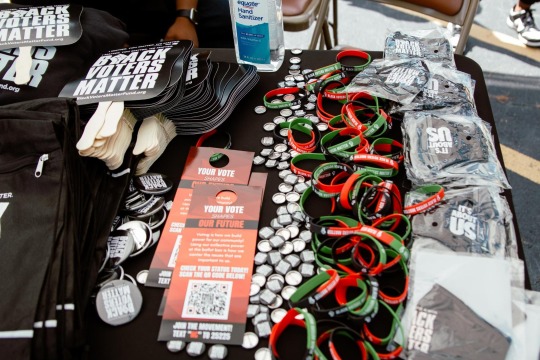

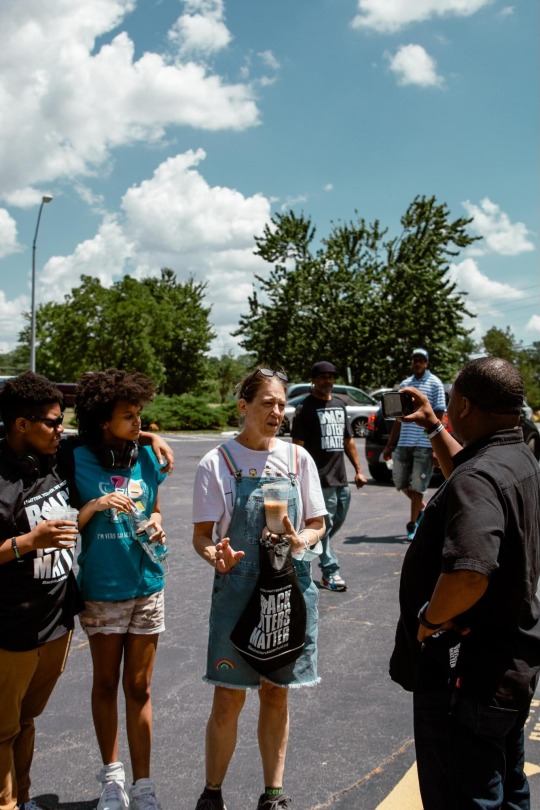
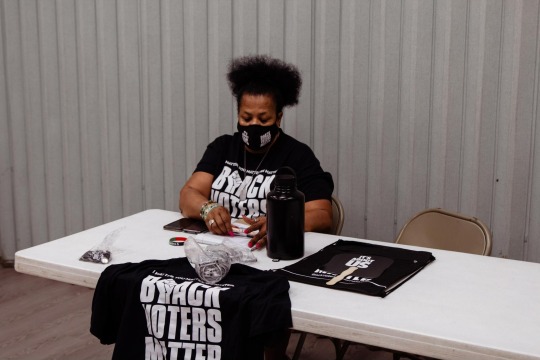
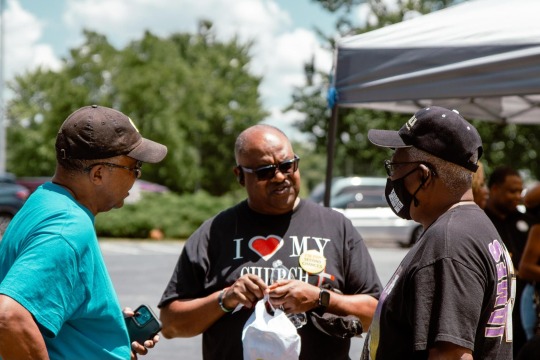
It’s not just about voting. We’re on the ground in North Carolina with our partners, Orchid Bloom NPO and GRAE Now for a Warrant Clinic to remove outstanding warrants on non-violent misdemeanor offenses.
Did you know thousands of people in North Carolina have warrants that prevent them from obtaining a drivers license, having access to employment, housing, and even the right to vote? That’s why we’re on the ground making sure our folks are cleared. It’s a FREEDOM SUMMER!
Stay updated on our work on the ground. Text “CLINIC” to 25225!
#black Voters Matter#power#love#blackvoters#itsaboutus#vote#cantstopwontstop#warrantclinics#freedom summer#wegotthepower
3 notes
·
View notes
Text
instagram
bet
Black voters matter, period! ✊🏾
Each ballot is a voice, a symbol of change, and a step towards a more just and equitable future. S/O to the women who fight for our voices to be heard. #AmericaInBlack #BET
0 notes
Text
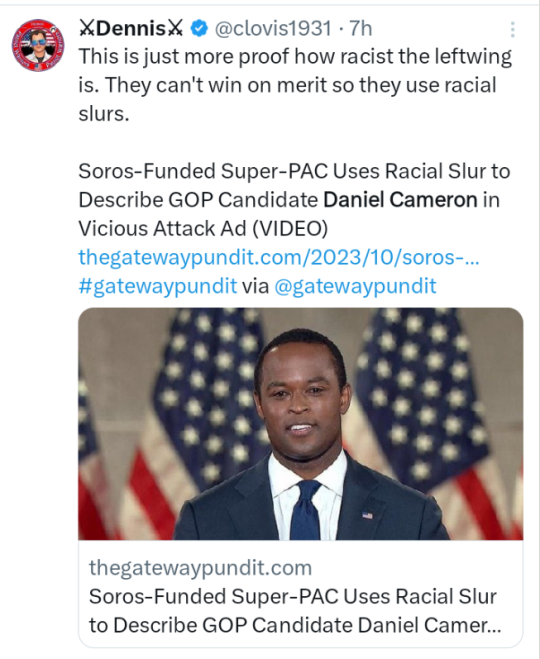
According to The Daily Wire, Black Voters Matter Action PAC, an electioneering group that spends millions in support of Democrat candidates, is up with an ad that refers to Cameron as “Uncle Daniel Cameron,” and uses the saying, “Skinfolk ain’t kinfolk” — a refrain used by black liberals to suggest that anyone who disagrees with them politically is a race traitor.
Here is the latest racist ad by Black Voters Matter..."
From Wiki: "Institutional and Corporate partners are collaborating to combine financial, volunteer, marketing and other resources to raise awareness of Black voting rights and address other Black community issues. This include America Votes advocacy, Southern Poverty Law Center (SPLC) awarding multi year grants, The Open Society Foundations, the philanthropic group founded by the business magnate George Soros bestowing a 5 year grant, BET partnering for the #ReclaimYourVote 2022 campaign, MTV’s “Rock the Vote” support to mobilize student voters, Oprah Winfrey's Own Your Vote raising money for voter education initiatives, and Ben & Jerry's is rebranding its Cold Brew Coffee flavor to "Change is Brewing", to highlight the power of Black voters and encourage voter participation by supporting Black Voters Matter activities. BVM partnered with BET Media Group and the National Urban League to promote Black community involvement in voter registration and to ensure Black voter voices are heard.
BET...Republican-owned
MTV...Republican-owned
George Soros...conveniently attaching himself to Leftist causes and being used to push an anti-Jewish conspiracy
Oprah Winfrey... don't get me started
Ben & Jerry's....big, phony Leftists and close paks to Bernie Sanders
That SKINFOLK AIN'T KINFOLK by the Black Voters Matter super pac, was straight up sabotage against the Democratic candidate for governor. That was an absolutely ratchet move, guaranteed to give Daniel Cameron, a psychopath who believes that nine year olds should be forced to carry babies, SYMPATHY. Figures that Roland Martin keeps focusing on it.
It had better not happen again.
0 notes
Text
Watch "One State Fails To Pass Ban On Slavery" on YouTube
youtube
1 note
·
View note
Link
0 notes
Photo



This Black Maternal Health Week, we’re bringing awareness to the staggering rates of Black maternal mortality and morbidity across the country.
Black mothers deserve access to the healthcare they need throughout pregnancy, childbirth, and postpartum.
The people we elect make decisions that impact our access to reproductive healthcare. Make sure you are registered to vote NOW at weall.vote/register. 💜
#black maternal health week#black maternal health#black women#black moms#black mothers#black health#reproductive health#reproductive justice#reproductive freedom#vote#voting#voter#register to vote#ballot#election#elections#black lives matter#blm
16 notes
·
View notes
Text
Call me out next time why don't you lol

#climate change#social justice#lgbtqia+#being borderline#ukraine#coronavirus#black lives matter#voter registration#signal boost#reproductive rights#SMI#mentally ill#mentally ill mothers
370 notes
·
View notes
Text
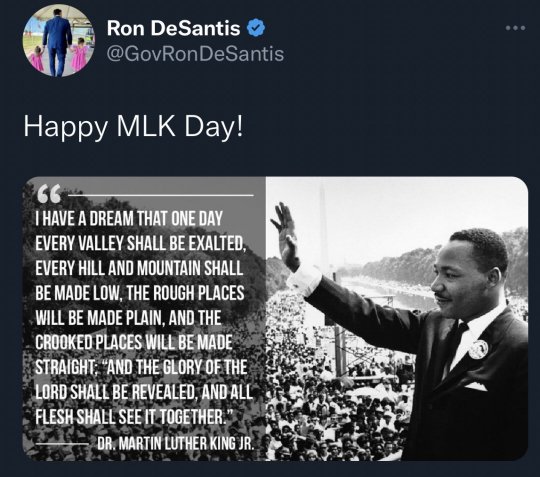
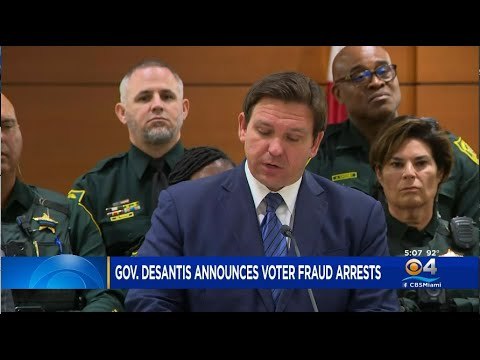


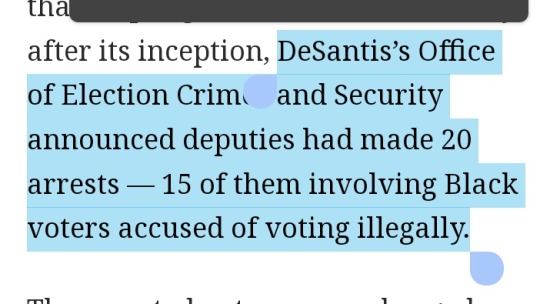
#Blm#news#maga#woc#women of color#ron desantis#voter fraud#republicans#liberals#florida#tampa#trump#donald trump#black livees matter#true crime#racism#twitter
138 notes
·
View notes
Text
youtube
Cliff Albright is speaking on how Black Voters Matter as a movement will add strength to the equity of the american vote in 2022. the gop has long lobbied their voters/ now Black Voters Matters comes directly to our communities. This is our movement, and our support makes it happen in 2022 November.
Vote in 2022 / Black Voters Matter
8 notes
·
View notes
Text
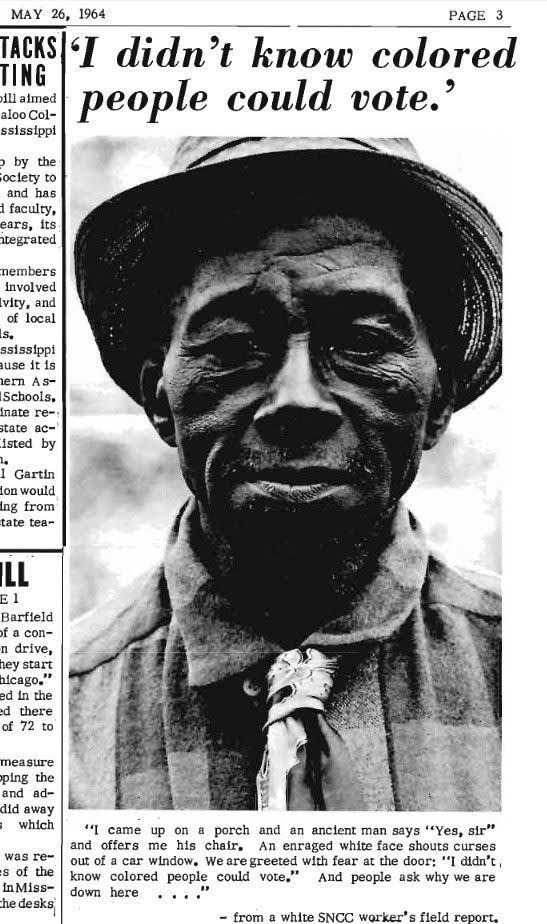
#register to vote#voter intimidation#voters rights#voting rights#black history#black tumblr#black literature#black history is american history#civil rights#black excellence#black community#civil rights movement#blackexcellence365#equal justice#equal rights#equal pay#black lives matter#black and white#black culture#black history month
378 notes
·
View notes
Text
"Mississippi Discriminates Black Residents, Appoints Judges Over Elected Judges"
youtube
the US department of Justice is going to have to step in and do something about this because quite frankly Tate Reeves has lost his damn mind
#Mississippi#Tate Reeves#white supremacy in government#homegrown hate#Black lives matter#Jackson Mississippi#voter disenfranchisement#minority voters#Youtube
42 notes
·
View notes
Photo
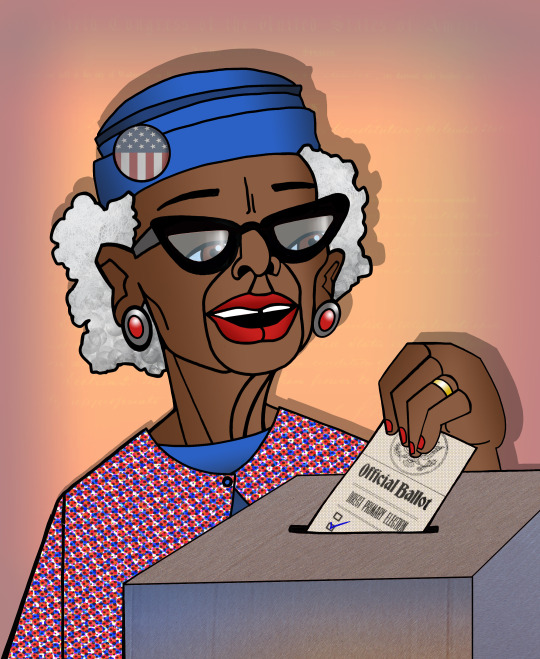
On this election day, there are lots of forces at work to keep Black people from getting to the polls. Or, if we do cast a vote, to keep that vote from being counted. Let's not make it easy. Turn up at the polls and bring a friend (or two or three).
VOTE! #Election2022
Voting While Black: https://bit.ly/LWBlack
#vote#please vote#black voters#black votes matter#black voices#ajuan mance#living while black#voting while black#black lives matter#black lives#election#election day#digital art#black art#black artist#your vote#your vote matters#your vote counts#every vote counts
132 notes
·
View notes
Text
Democrats, always project and accuse others of the very thing they are do.
#democrats#biden#politics#projection#liberalism is a mental disorder#liberal agenda#sjws ruin everything#government#liberals#white house#BLM#Black Lives Matter#communist#socialist#socialism#one world government#riots#trump 2024#democratic party#voter fraud#domestic terrorism#progressives
130 notes
·
View notes